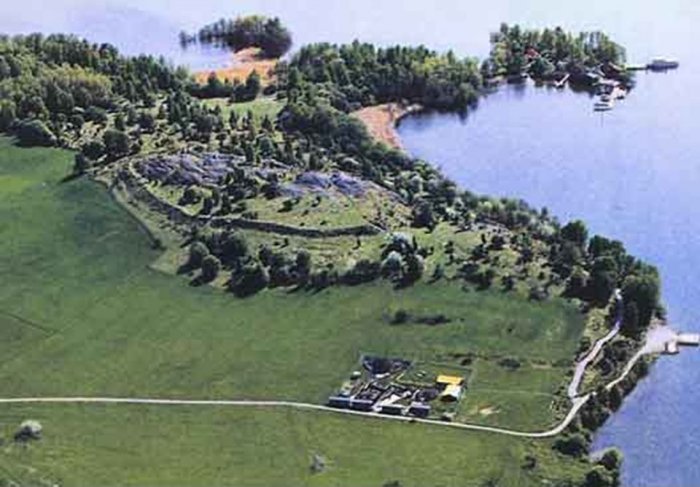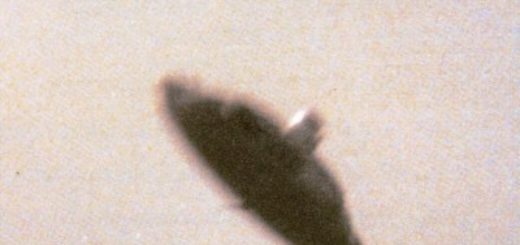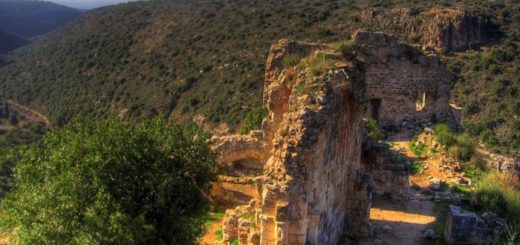Huge Viking Age Mason Owned By Herigar Finally Found At Birka In Sweden
Sometimes called Sweden’s first city, Birka was once of the most important trading centers during the Viking Age.
Located on the island Björkö in Lake Mälaren, Sweden Birka has long served as an important archaeological site that sheds light on the lives of the Vikings.

Using ground-penetrating radar, scientists have now made another fascinating discovery at Birka. High resolution geophysical surveys have revealed a major Viking period hall on the site, with a length of around 40 meters.
The research is a collaboration between Zentrum für Baltische und Skandinavische Archäologie, Stockholm county museum and the Archaeological Research Laboratory, Stockholm University.
The results will be published in the international scientific journal Archäologisches Korrespondenzblatt.
Based on the land upheaval the area of the Viking hall can be dated to sometime after 810 AD. The hall is connected to a large fenced area that stretches towards the harbor basin.
According to archaeologists the Viking mason was owned by a man called Herigar who was one of the King’s representatives. Herigar is mentioned in several historical sources.
For centuries, it has been speculated where the manor of the royal bailiff of Birka, Herigar, might have been located. To finally have discovered Herigar’s mason is a big archaeological success.
During spring of 2016 a number of large presumed house terraces were identified, one of the main harbor bays of the island of Björkö, situated outside the town boundaries of the Viking town of Birka.
The existence of Herigar’s large Viking halls has now been definitely confirmed.
“This kind of Viking period high status manors has previously only been identified at a few places in southern Scandinavia, for instance at Tissø and Lejre in Denmark. It is known that the fenced area at such manors was linked to religious activities” says Johan Runer, archaeologist at the Stockholm county museum.
During the survey a predecessor for the Viking Age manor was also identified at the site: a high status manor that existed during the Vendel period, prior to the establishment of the Viking Age town of Birka.
Both the identified buildings and their continued use from the Vendel period to the Viking Age correlate well with the “ancestral property” of Birka’s royal bailiff Herigar as mentioned in Rimbert’s Vita Anskarii. Herigar was Christianized by Ansgar, archbishop of Hamburg-Bremen, during his first mission c. 830 AD, and he built the first church on his land.
“The consequences of our discoveries cannot be overestimated: in terms of the emergence of the Viking town of Birka, its royal administration and the earliest Christian mission to Scandinavia”, says Sven Kalmring, researcher at the Zentrum für Baltische und Skandinavische Archäologie, Schleswig.
Plenty of precious artifacts have been found at Birka over the years. One of the most important discoveries made at Birka is a tiny dragon’s head, one of the most famous symbols of the Vikings.
Another intriguing discovery is the Birka Ring, an ancient Viking artifact that has an unexpected inscription of foreign origin.
Archaeologists have excavated at Birka since the 17th century and there is still much to find there.



 Creators of mankind
Creators of mankind Description of “Tall white aliens”
Description of “Tall white aliens” Where they came from?
Where they came from? About hostile civilizations
About hostile civilizations The war for the Earth
The war for the Earth “Tall white aliens” about eternal life
“Tall white aliens” about eternal life Video: “Nordic aliens”
Video: “Nordic aliens” Aliens
Aliens Alien encounters
Alien encounters The aliens base
The aliens base UFO
UFO Technology UFO
Technology UFO Underground civilization
Underground civilization Ancient alien artifacts
Ancient alien artifacts Military and UFO
Military and UFO Mysteries and hypotheses
Mysteries and hypotheses Scientific facts
Scientific facts


















